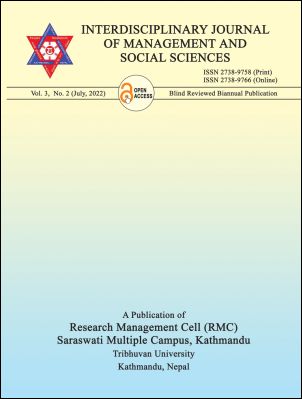Ensuring Economic Stability through Liquidity Management in the Banking Sectors of Nepal
DOI:
https://doi.org/10.3126/ijmss.v3i2.50258Keywords:
Balance of payment, credit supply, economic stability, financial instruments, liquidity, remittance, SMEsAbstract
This study aims at finding how Nepalese banks and financial institutions (BFIs) struggle at managing liquidity to stabilize financial performance for the nation’s economic sustainability. Investigating the relationship between liquidity management and economic stability remains as sole purpose to ensure the Nepalese economy. This study applies the qualitative research design and aims to explore the liquidity management of Nepalese BFIs with an interpretative approach. The economic and financial stability of the country can be accomplished through adequate and proper liquidity management in BFIs. The loanable fund is easily available in the banking sector that vibrates on economic activities including production, distribution, transportation, advertising, communication, exports, and job creation, consequently affecting the total economic activities. Based on the findings, the current scenario of liquidity crisis can be minimized through appropriate financial instruments, monetary policies, an increase in the export of goods, and discouraging the import of luxury items. Remittance is a major source of foreign currency in Nepal, and government needs to encourage people to send remittances through formal banking channels. Equally, the government needs to increase the spending capacity of budgeted capital expenditure on time. Policymakers, economists, microfinance practitioners, Banks, financial institutions (BFIs), and regulatory authorities are expected to be benefitted from the conclusions of the study.

